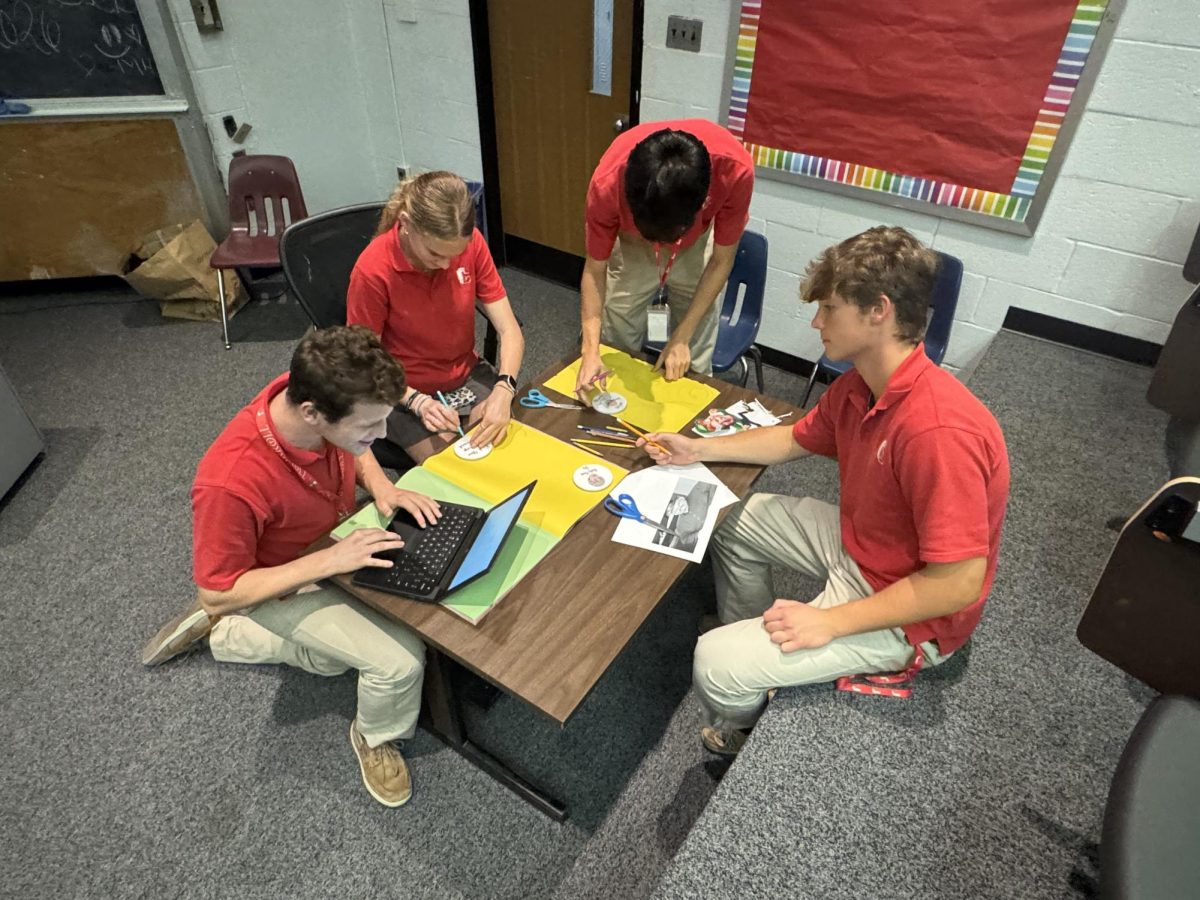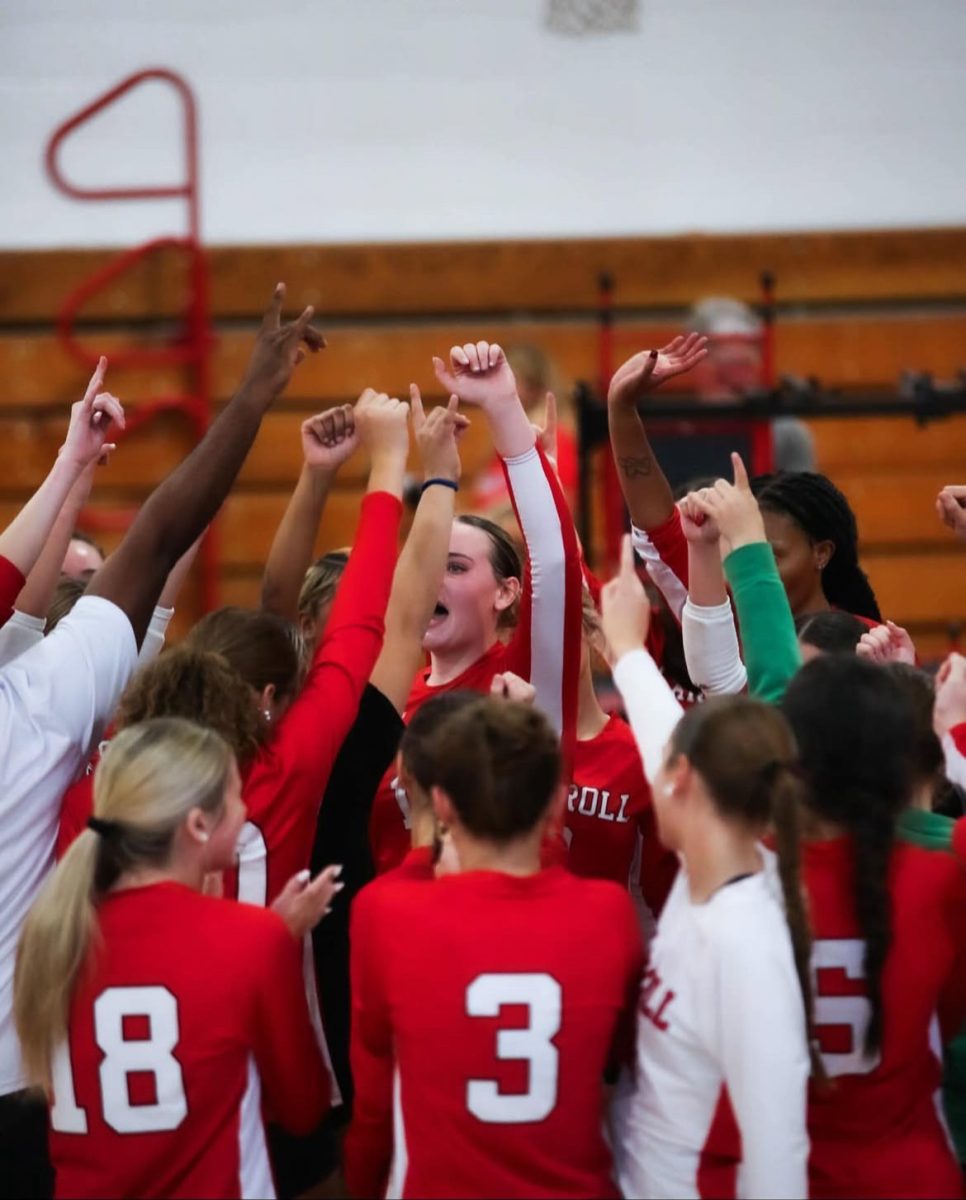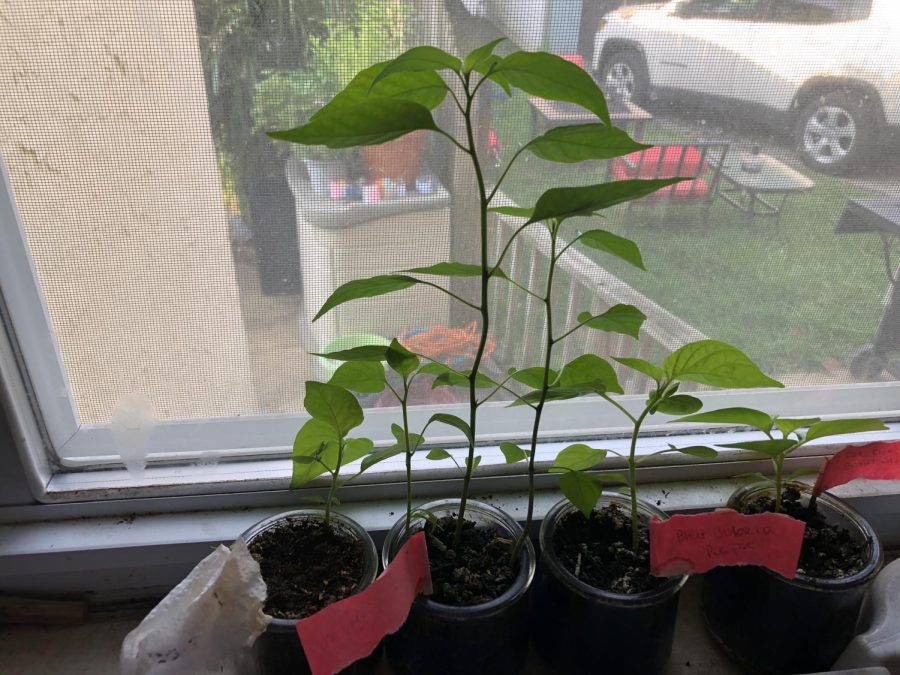Planning on planting??? Find tips and tricks here
Seedlings sprouted on a window sill await transplanting.
May 11, 2022
Every home gardener knows that Mother’s Day is the unofficial start of the planting season.
“Spring/Mother’s Day [is when] all plants should be planted,” said junior Casandra Pendleton.
Unless there is cold weather, people can begin planting flower and vegetable seeds for their home gardens in early to mid-May.
There is still time to plant.
“Gardening is something that could be interesting, but I don’t know enough to start,” said junior Connor Archbold.
For first-time gardeners, try growing a tomato or pepper plant. Most varieties of tomatoes and peppers grow well in Pennsylvania’s summer climate.
Remember to keep the tomatoes in a place where they can receive direct sunlight for at least eight hours a day. Along with an ample amount of light, peppers also require a lot of water. Also, placing peppers and tomatoes together in the same planter can sometimes help them grow better.
One of the most crucial aspects of gardening is patience. It may take weeks for certain plants to sprout and months before they produce fruit, so do not give up if you do not see results within a few days.
However, impatient gardeners who do not want to wait weeks to see results should try planting sunflowers.
Place some mammoth sunflower seeds in an old yogurt cup filled with soil and keep the flower in direct sunlight (it needs at least 6-8 hours of light a day), watering it daily. In about 3-5 days, there should be a sprout. In a couple of weeks, the sunflower will be ready to transplant into the ground!
When transplanting any plant, keep in mind that the plant will be shocked. Wilting may occur in the days right after relocation, but do not worry. The plant is just trying to acclimate to its new surroundings. To help prevent wilting, water the plant right after transplanting it, keep it with like species, and do not drastically change its environment. For example, if moving a plant from indoors to outdoors, only do so when the outside temperature is similar to the average indoor temperature.
One of the biggest concerns among home gardeners is critters eating their vegetables.
“How do you keep animals from eating your plants?” asked junior Catherine Crossan.
Putting bars of soap in planters should keep bunnies and squirrels away from vegetables.
To protect flowers and seeds from birds, gardeners should sprinkle hot pepper flakes in the soil, being careful not to put the pepper flakes directly onto the flower petals.
Another common concern among gardeners is bottom-end rot, which occurs in fruits and vegetables and is caused by insufficient calcium levels. An easy way to fix this problem is eggshells!
Clean out a couple of used eggshells and let them dry. After a few days of drying, microwave them for about two minutes to get rid of any bacteria. After that, put them into a blender and grind them up into a powder. Finally, mix the eggshell powder in with the soil. Over time worms will break down the calcium, making it available for plant use.

















